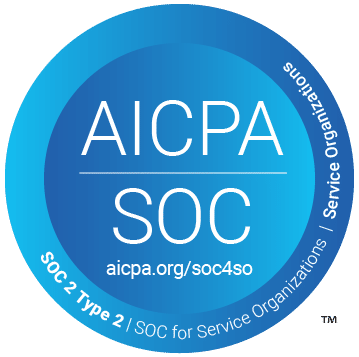Health plans considering Medicare Advantage or Medicaid as a new line of business need to be well informed of the greatly enhanced oversight and requirements they will face compared to state regulation of commercial plans. The process for enrollment is arduous and exacting, as the application requirements put forth by CMS and each state demonstrate. Medicaid plan enrollment is a state-driven process. Medicare enrollment as a Part C managed care plan (or Medicare Advantage organization also known as an MAO) is managed by CMS directly and is the primary focus of this article.
Health plans that offer commercial coverage may find that many of their current practices provide the structural foundation needed for launching into government programs but will require changes to meet the new requirements of Medicare or Medicaid. Three areas that often seem to be particularly challenging are member appeals & grievances, downstream entity oversight, and mandatory plan reporting. These are also areas that are commonly included in CMS’ regular audits and result in audit findings due to performance deficiencies for many plans. Meeting and maintaining provider panel requirements, especially for plans whose geographic catchment area includes rural communities, can also be a challenge, requiring expensive contracting concessions due to the lack of provider alternatives available to meet Medicare panel requirements. Finally, while there are operational areas that usually require increased staffing and expertise to meet the new requirements, the compliance department is another critical administrative team that will require expanded resources and expertise to stay on top of Medicare’s ever-evolving requirements, transmittals and audit protocols.
Another area should be considered is exclusion screening requirements. As a commercial health plan, the screening requirements are relatively minimal. However, a health plan considering a bid to become a Medicare Advantage plan needs to fully understand the extensive exclusion screening required to meet CMS standards. Developing the internal processes for the required monthly checks against multiple databases and then staffing the follow-up required to investigate potential matches is labor-intensive but fortunately can be outsourced to organizations like Streamline Verify that can perform the screenings that meet CMS requirements and allow plans to focus instead on addressing the winnowed list of potential matches identified by the screening process. A CMS auditor will expect to see a policy and procedure on how exclusion screenings are accomplished, their frequency and likely screening results from the audit period.
As a Medicare Part C contractor, plans are required to assure that federal funds are not being paid to any individual or entity who has been excluded, sanctioned or debarred by the federal government. The financial penalties for employment of an excluded individual or entity can be severe, even if a plan self-discloses that it did so inadvertently.
Overview of Exclusion Lists
There are three primary exclusion lists that Medicare Advantage Plans should check regularly to assure that this requirement is met. A government exclusion list is a roster of individuals and organizations that are not eligible to participate in federal or state contracts due to criminal behavior or misconduct. These lists are updated monthly so screening should occur with that same frequency.
CMS sets clear expectations for applicants regarding exclusion. The application for enrollment as a Medicare Advantage plan requires the following attestation as to exclusion and debarment:
3.4.1. Program Integrity
Applicant, applicant staff, and its affiliated companies, subsidiaries or subcontractors (first tier, downstream, and related entities), and subcontractor staff agree that they are bound by 2 CFR 376 and attest that they are not excluded by the Department of Health and Human Services Office of the Inspector General or by the General Services Administration exclusion lists. Please note that this includes any member of the board of directors and any key management or executive staff or any major stockholder.
- HHS-OIG’s List of Excluded Individuals/Entities (LEIE)
The LEIE which is maintained by the HHS-OIG (Office of Inspector General) is the primary federal exclusion list for the health care industry. It lists all current exclusion actions by HHS-OIG exclusively. The LEIE does not include any historical exclusion information or information about reinstatements. The LEIE is publicly available in several formats that allow options on how to conduct a search of the database. States are required to inform the HHS-OIG of actions taken at the state level due to criminal behavior or misconduct. Upon OIG review, the state actions can then also result in federal exclusion. - GSA’s SAM.gov database
The SAM.gov database is maintained by the General Service Administration (GSA). Unlike the LEIE which captures exclusions taken only by the HHS-OIG, SAM.gov is a composite list of actions taken by multiple federal agencies, including the HHS-OIG and the Treasury Department. SAM.gov must also be checked routinely for hiring and retention purposes to assure that no sanctioned or debarred individuals of entities benefit from any federal procurement. It is also in the public domain for use by anyone. It should be noted that there have been noted discrepancies between source data from various federal agencies and the SAM.gov database. - CMS’ Preclusion List
Medicare Advantage contractors (which include Medicare Part C and Part D plan sponsors) must also screen against the Medicare Preclusion List. The Preclusion List includes not only individual medical practitioners and providers but also dentists, pharmacists, pharmacies, medical practices and medical suppliers. In addition, providers who voluntarily opt out of Medicare will appear on the Preclusion List. Unlike the LEIE and SAM.gov databases, the Preclusion List is not publicly available. The CMS updates the Preclusion List every thirty days.
The CMS Preclusion List includes individuals or entities that meet the following criteria:
- Currently revoked from the Medicare program and is under an active reenrollment bar, and CMS has determined that the underlying conduct that led to the revocation is detrimental to the best interests of the Medicare Program;
- Has engaged in behavior for which CMS could have revoked the individual or entity to the extent applicable if they had been enrolled in Medicare, and CMS determines that the underlying conduct that would have led to the revocation is detrimental to the best interests of the Medicare Program; or
- Has been convicted of a felony under federal or state law within the previous 10 years that CMS deems detrimental to the best interests of the Medicare Program.
How the LEIE and the CMS Preclusion List Relate
The Medicare Preclusion List and LEIE do overlap but differ in significant ways. Providers excluded by the OIG will also be on the CMS Preclusion List. OIG exclusions are imposed due to criminal behavior and as such are part of the CMS Preclusion List criteria. Therefore, if a Medicare Advantage plan finds a provider on the OIG’s LEIE, the plan is not required to also check the CMS Preclusion List.
Differences to consider:
- Under the LEIE, exclusion occurs only after a final action is taken against a provider or entity for criminal behavior or professional misconduct. The Medicare Preclusion List does not require a final action for a party to be included on that list. If there is a basis for revocation, such as participating in conduct that COULD result in revocation (whether or not revocation actually occurs), a party may be put on the Medicare Preclusion List.
- There are other categories of providers who are precluded by CMS from participation in Medicare plan and yet will not appear on the OIG Exclusion List because the preclusion is based on differing criteria.
- Once a provider is removed from the OIG’s LEIE and is no longer excluded due to a reinstatement by the OIG, a Medicare Advantage plans must then turn to the CMS Preclusion List because there are instances in which a provider remains precluded by CMS from Medicare participation even though they are no longer excluded by the OIG. For example, CMS may determine that the provider was precluded for behavior which CMS deems sufficiently problematic to warrant being removed from participation in a Medicare plan even though it did not result in a criminal conviction.
Conclusion
Becoming a Medicare Part C plan is a labor-intensive process that requires a significant investment in time and resources. Once approved, the work to maintain a Medicare program is, in some ways, even more challenging due to the very high expectations of CMS to both provide the highest quality of care and to administer the plan in accord with all contract requirements. Realistically, plans should expect audit findings and noted deficiencies due to the complexity of the requirements of the program. Where possible, outsourcing of certain tasks such as exclusion screening can prove to be cost-effective way to offload certain requirements to external experts and thereby increase staff time to meet other labor-intensive work required to make a Medicare Advantage plan successful for both its Medicare members and the organization.



































